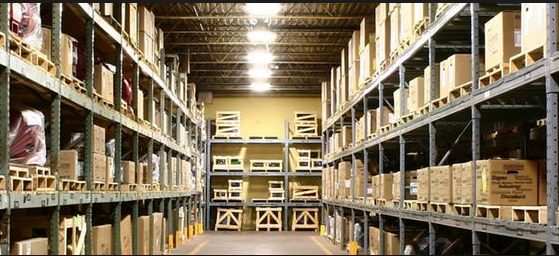In the world of commercial lighting, especially in outdoor lighting and large indoor areas there are three most common lighting technologies found:
-
Metal Halide (MH)
-
High Pressure Sodium (HPS)
-
Light-Emitting Diode (LED)
With metal halide and high pressure sodium lighting technologies in an overwhelming amount of facilities and fixtures, LED has a long way to come in terms of being the majority.
When the question of “what is the best alternative to metal halide lights” comes up: the overwhelming and most common answer these days is LED. There are just so many benefits of LED vs metal halide, hence the massive growth for the LED lighting market while metal halide are slowly becoming obsolete.
Wondering what exactly are the benefits of LED over metal halide? Here they are:
Benefits of LED over MH
They use 50-75% less energy. Depending on where you get your industrial lighting products from will all depend on the energy savings you realize from you LED system. Ensuring you do proper research before placing an order will ensure the best ROI as well as short and long term energy savings. So although any LED is generally better than MH; if you don’t do your research you could be cutting yourself short of 25% more energy savings by choosing the wrong supplier / manufacturer. With savings like this; you can just “eye” how fast you can realize a return on investment.
Higher quality. LEDs not only offer higher quality of light emitted but also higher quality structure. It’s just in the way they are built. But like the previous benefits, it can all depend on the company you get your lighting fixtures from. Ensuring the highest of quality built lights can seriously make or break your ROI. If you go with the wrong company you could be costing yourself more, especially if your lights are going into a fragile environment (such as food processing plants, refineries, etc). Back to the part about higher quality of light; LED technology in general is known to emit and provide a better and wider range of color temperatures and Color Rendering Index numbers. In addition, if you’ve ever had issues with metal halide fixtures buzzing or flickering; you’ll be surprised to know that LED will never do these things, not even near the end of their lifespan!
LED gives rebates. Have you ever got a rebate for purchasing a metal halide light? Probably not, know why? Because energy companies know that they are inefficient and they only reward those who make the investment in quality lighting that they know is saving extranomical amounts of energy (especially when you are talking about a large building with many lights). Only thing you need to remember to be eligible for rebates is this: buy DLC qualified products only. The DLC qualifies only commercial / industrial lighting products that are of quality. And if they aren’t listed, utility companies typically (if ever) will give you rebates simply for having a LED system installed in your building.
Don’t get me wrong; some items don’t qualify to be listed on the DLC’s official website not because they aren’t quality but rather because they don’t fit the criteria to be listed. They can also be listed with Energy Star which is equally as good.
How to replace existing metal halide lights?
Replacing existing lights can have two different options: Fully replace or just retrofit.
Fully replacing a light involves removing and replacing not only the light source itself but also the fixture it is held in. While on the contrary, a retrofit is just a replacement of the existing light source with a new one; all while keeping the external fixture that the light source is in.
Something called a metal halide LED retrofit is the perfect option for those who would simply like to replace technologies from metal halide to LED instead of replacing the entire fixture. If you’d like to replace the entire lighting fixture too, you will be best off buying a system that is all put together and practically ready to install.
source http://my-led-lighting-guide.blogspot.com/2016/09/what-is-best-replacement-for-metal.html

No comments:
Post a Comment